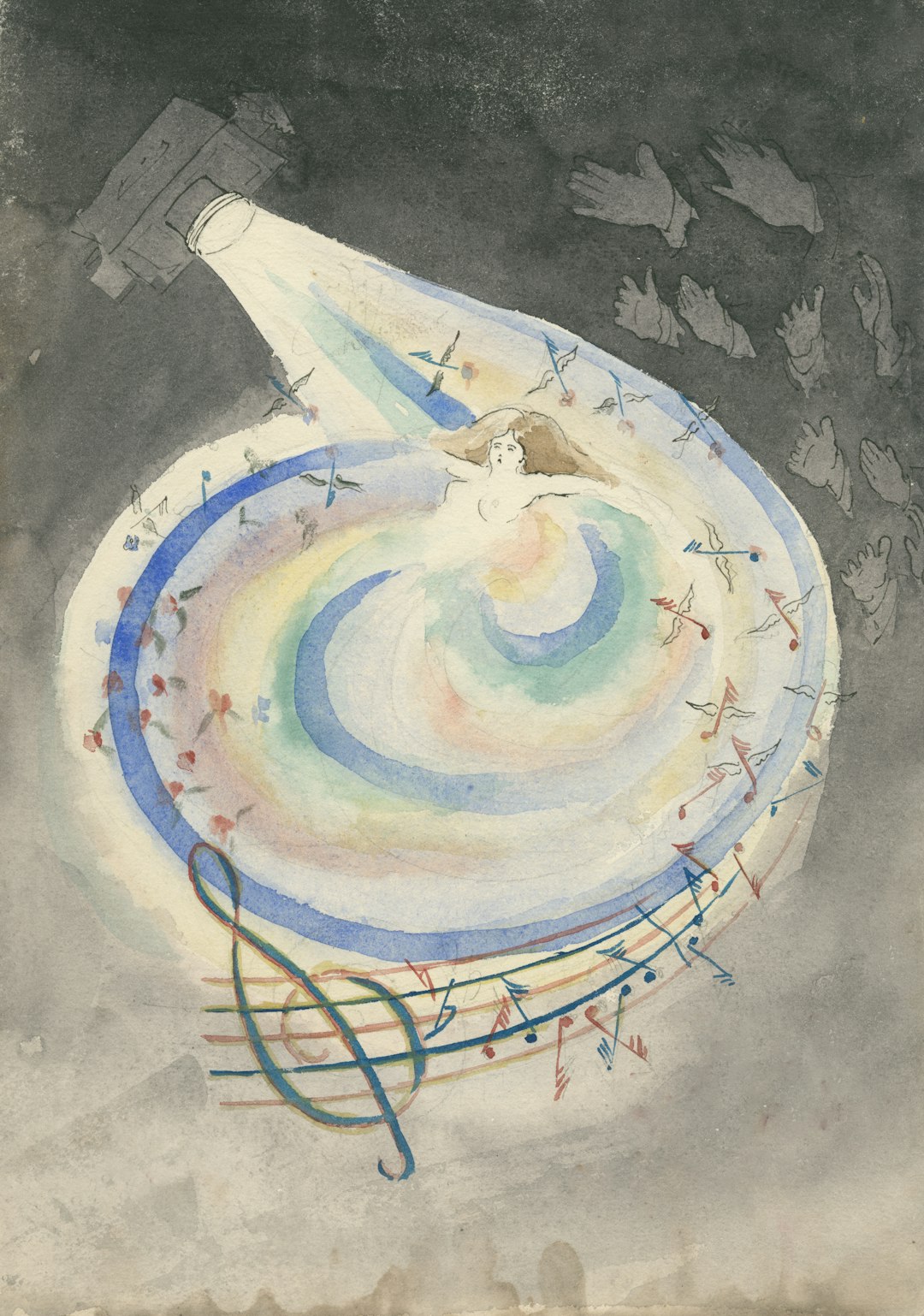Support our hydrofoil educational content for free when you purchase through links on our site. Learn more
Discover Wind Foiling: 7 Essential Tips for Beginners! 🌊

Are you ready to take your watersport game to the next level? Wind foiling is the exhilarating blend of windsurfing and hydrofoiling that allows you to glide effortlessly above the water’s surface. Imagine catching the wind just right, feeling the rush of speed, and soaring above the waves like a bird! Sounds thrilling, right? But before you dive in, you might be wondering what gear you need, where to go, and how to avoid common pitfalls.
In this comprehensive guide, we’ll cover everything from the essential gear to the best locations for wind foiling, ensuring you’re fully prepared for your first flight. Plus, we’ll share insights from seasoned surfers at Hydrofoiling™ who have mastered the art of foiling. So, whether you’re a complete newbie or looking to refine your skills, this article has got you covered!
Key Takeaways
- Wind foiling combines windsurfing and hydrofoiling for a unique riding experience that lets you glide above the water.
- Essential gear includes a board, foil, and sail—choosing the right setup is crucial for your skill level.
- Safety is paramount! Always wear a helmet and buoyancy aid, and choose safe locations for practice.
- Common mistakes include looking down and leaning back too much—maintain balance and focus on where you want to go.
- Explore top brands like Starboard, RRD, and Fanatic for high-quality wind foiling gear.
Ready to gear up? 👉 Shop top wind foiling brands like Starboard | Fanatic | RRD and start your wind foiling adventure today! 🏄♂️
Table of Contents
- Quick Tips and Facts
- The Evolution of Wind Foiling: A Brief History
- Understanding the Gear: Essential Components of Wind Foiling
- Top 7 Wind Foiling Brands You Should Know
- How to Choose the Right Wind Foil Setup for Your Skill Level
- The Best Locations for Wind Foiling Adventures
- Safety Tips for Wind Foiling: Stay Safe While Having Fun
- Common Mistakes to Avoid When Starting Wind Foiling
- Wind Foiling vs. Other Water Sports: What Sets It Apart?
- The Future of Wind Foiling: Trends and Innovations
- Conclusion
- Recommended Links
- FAQ
- Reference Links
Quick Tips and Facts
- Wind foiling, a thrilling fusion of windsurfing and hydrofoiling, lets you glide above the water, powered by the wind. 💨
- It’s not as hard as it looks! With some practice and the right guidance, you’ll be up and foiling in no time. 💪
- Safety first! Always wear a helmet and a buoyancy aid, and choose a spot with plenty of space and no obstacles. ⛑️
- Start with a larger board and smaller sail for better stability and control. As you progress, you can downsize your gear. 🏄
- Join a wind foiling school or find an experienced instructor to learn the ropes and avoid bad habits. 👨🏫
Want to know what equipment you need to start your wind foiling journey? Check out our comprehensive guide: Hydrofoiling Equipment: Your 7-Step Checklist 🏄♂️
The Evolution of Wind Foiling: A Brief History

Wind foiling, like many cool things in life, wasn’t an overnight sensation. It’s the product of years of innovation and a sprinkle of daredevil spirit. Let’s take a quick trip down memory lane:
- Early Days (1980s-2000s): The first attempts at wind foiling were, shall we say, experimental. Bulky prototypes and limited success meant it remained a niche pursuit.
- Rise of Kite Foiling (2000s): Kiteboarding paved the way, proving that hydrofoils could unlock a whole new level of performance.
- Wind Foiling Takes Off (2010s): With improved designs and materials, wind foiling started to gain traction. Riders realized they could access incredible speeds and glide effortlessly in lighter winds.
- Olympic Debut (2024): The ultimate recognition! Wind foiling (specifically the IQFoil class) is now an official Olympic event, propelling it into the global spotlight.
From those early prototypes to the Olympic stage, wind foiling has come a long way. And guess what? This is just the beginning! To delve deeper into the captivating history of hydrofoiling, visit our Hydrofoil History section.
Understanding the Gear: Essential Components of Wind Foiling
Wind foiling might seem like a jumble of high-tech equipment, but it’s simpler than you think. Let’s break down the key components:
- Board: Think of this as your floating platform. Wind foil boards are typically shorter and wider than regular windsurfing boards, providing stability and volume for those early flights.
- Foil: This is the magical bit! The foil consists of a mast, fuselage, front wing, and stabilizer. As you gain speed, the front wing generates lift, raising the board out of the water and enabling you to fly.
- Sail: Just like in windsurfing, the sail harnesses the wind power. Wind foil sails are often smaller and designed for efficiency in lighter winds.
- Mast: This vertical component connects the board to the foil. Mast length influences the ride height and performance characteristics.
- Fuselage: The fuselage connects the mast to the wings. Its length and shape affect the foil’s stability and turning radius.
- Front Wing: The larger of the two wings, the front wing is responsible for generating lift. Different wing sizes and shapes suit various wind conditions and riding styles.
- Stabilizer: Located at the back of the foil, the stabilizer provides stability and control, preventing the foil from pitching up or down uncontrollably.
Top 7 Wind Foiling Brands You Should Know
Choosing the right gear can make or break your wind foiling experience. Here are seven top brands renowned for their quality and performance:
- Starboard: A powerhouse in the watersports world, Starboard offers a wide range of wind foil boards, foils, and sails for all levels. Their IQFoil equipment is the official gear for the Olympics.
- RRD (Roberto Ricci Designs): Known for their innovative designs and Italian craftsmanship, RRD offers a comprehensive range of wind foil equipment, from beginner-friendly setups to high-performance gear.
- Fanatic: A brand synonymous with quality and performance, Fanatic offers a diverse lineup of wind foil boards, foils, and sails, catering to riders of all skill levels.
- Naish: Founded by windsurfing legend Robby Naish, Naish is a pioneer in watersports. They offer a wide range of wind foil gear, known for its performance and durability.
- Slingshot: A brand known for pushing boundaries, Slingshot offers a range of high-performance wind foil equipment, including their popular Hover Glide foil system.
- Duotone: Formerly part of North Sails, Duotone is a leading brand in windsurfing and kiteboarding. They offer a range of wind foil equipment, known for its quality and performance.
- Severne: A brand focused on windsurfing and wind foiling, Severne offers a range of high-quality sails, boards, and foils, known for their performance and attention to detail.
How to Choose the Right Wind Foil Setup for Your Skill Level
Navigating the world of wind foil gear can feel overwhelming, especially for beginners. But fear not! Here’s a breakdown to help you choose the right setup:
Beginner:
- Board: Look for a larger board (around 85 liters or more) with good volume and stability. A wider board will make those early attempts at foiling much easier.
- Foil: Opt for a foil with a larger front wing for maximum lift at lower speeds. A stable and forgiving foil design will make learning more enjoyable.
- Sail: Choose a smaller sail (around 4-5 square meters) that’s easy to handle. As you progress, you can gradually increase the sail size.
Intermediate:
- Board: You can downsize to a smaller board (around 75-85 liters) for increased maneuverability and responsiveness.
- Foil: Consider a foil with a smaller front wing for higher speeds and more dynamic performance.
- Sail: Experiment with different sail sizes (around 5-7 square meters) to find the right balance between power and control.
Advanced:
- Board: Advanced riders often prefer smaller, more specialized boards (under 75 liters) for maximum performance and control.
- Foil: High-performance foils with smaller wings and more aggressive designs are favored for speed and maneuverability.
- Sail: Sail choice depends on wind conditions and riding style, but advanced riders often use larger sails (over 7 square meters) for maximum power.
The Best Locations for Wind Foiling Adventures
Ready to take your wind foiling adventures to epic locations? Here are a few spots that’ll leave you breathless:
- Maui, Hawaii: The birthplace of windsurfing is also a wind foiling paradise. Hookipa Beach is legendary for its strong winds and perfect waves.
- Tarifa, Spain: Known as the “Wind Capital of Europe,” Tarifa offers consistent winds and a variety of spots for all levels.
- Hood River, Oregon: This Columbia River Gorge town is a mecca for wind sports. The “Gorge” is renowned for its strong winds and challenging conditions.
- Cape Town, South Africa: With its stunning scenery and world-class wind conditions, Cape Town is a wind foiling dream destination.
- Sylt, Germany: This North Sea island is a popular spot for wind sports, offering challenging conditions and a vibrant windsurfing scene.
Safety Tips for Wind Foiling: Stay Safe While Having Fun
Wind foiling is an exhilarating sport, but it’s important to prioritize safety. Here are some essential tips to keep in mind:
- Wear a Helmet: Protect your noggin! A helmet is crucial for any watersport, especially one that involves flying above the water.
- Use a Buoyancy Aid: Even if you’re a strong swimmer, a buoyancy aid provides essential flotation and impact protection.
- Choose a Safe Location: Start in a spot with plenty of space, clear of obstacles, and with consistent wind conditions.
- Know Your Limits: Don’t attempt maneuvers beyond your skill level. Gradually progress as you gain experience and confidence.
- Check the Weather: Be aware of wind conditions and potential changes. Avoid foiling in storms or offshore winds.
- Ride with a Buddy: It’s always safer to foil with a friend who can provide assistance if needed.
- Learn Self-Rescue Techniques: Know how to release yourself from your equipment and return to shore safely.
Common Mistakes to Avoid When Starting Wind Foiling
We’ve all been there—those awkward beginner moments. Here are some common wind foiling mistakes to avoid:
- Looking Down at Your Feet: Keep your gaze up and focused on where you want to go. Looking down disrupts your balance.
- Leaning Back Too Much: Maintain a balanced stance over the board. Leaning back will cause the foil to stall.
- Sheeting In Too Aggressively: Control your sail power and sheet in gradually. Sheeting in too quickly can lead to loss of control.
- Not Using Your Legs: Engage your leg muscles to control the foil and maintain stability. Don’t rely solely on your upper body.
- Giving Up Too Soon: Wind foiling takes time and practice. Don’t get discouraged if you don’t get it right away. Persistence is key!
Wind Foiling vs. Other Water Sports: What Sets It Apart?
Wind foiling stands out from the crowd with its unique blend of speed, grace, and adrenaline. Here’s how it compares to other popular watersports:
| Feature | Wind Foiling | Windsurfing | Kiteboarding | Wing Foiling |
|---|---|---|---|---|
| Learning Curve | Moderate | Moderate | Challenging | Moderate |
| Wind Range | Light-Medium | Medium-High | Medium-High | Light-Medium |
| Speed | High | Medium | High | High |
| Excitement | High | Medium | High | High |
| Equipment Cost | High | Medium | High | Medium-High |
What sets wind foiling apart?
- Effortless Glide: Experience the sensation of flying above the water with minimal drag.
- Light Wind Performance: Harness even the gentlest breezes to reach impressive speeds.
- Quiet and Smooth Ride: Enjoy a peaceful and serene experience, gliding silently above the water.
- Challenging and Rewarding: Mastering the art of wind foiling is a rewarding accomplishment.
The Future of Wind Foiling: Trends and Innovations
Wind foiling is constantly evolving, with new technologies and innovations pushing the boundaries of what’s possible. Here are some exciting trends to watch:
- Electric Wind Foiling: Imagine the freedom of foiling without wind! Electric hydrofoils are gaining popularity, offering a silent and sustainable way to enjoy the sport.
- Foil Design Advancements: From higher aspect ratio wings to innovative materials, foil designs are constantly improving, leading to increased performance and efficiency.
- Accessibility and Affordability: As the sport grows, wind foiling equipment is becoming more accessible and affordable, opening up the experience to a wider audience.
- Crossover with Other Sports: We’re seeing exciting crossovers between wind foiling and other watersports, such as wing foiling and even stand-up paddleboarding.
The future of wind foiling is bright, fueled by innovation, passion, and a desire to push the limits of what’s possible on the water. So, are you ready to ride the wave of the future?
Conclusion

Wind foiling is not just a sport; it’s an exhilarating experience that combines the thrill of windsurfing with the magic of hydrofoiling. With the right gear, a bit of practice, and a passion for adventure, you can soar above the water like never before.
Positives and Negatives of Wind Foiling
Positives:
- Incredible Speed and Lift: Wind foiling allows you to achieve impressive speeds even in light wind conditions.
- Unique Experience: The sensation of flying above the water is unmatched, offering a serene and quiet ride.
- Versatility: You can use existing windsurfing gear with some modifications, making it accessible for many windsurfers.
Negatives:
- Learning Curve: While not insurmountable, mastering the technique can take time and patience.
- Equipment Cost: High-quality gear can be an investment, which might deter some beginners.
- Safety Concerns: The sport requires a good understanding of wind conditions and safety measures.
In summary, if you’re ready to embrace the challenge and excitement of wind foiling, we wholeheartedly recommend diving into this thrilling sport. With the right mindset and gear, you’ll be gliding above the water in no time! 🌊✨
Recommended Links
- 👉 Shop Starboard Wind Foils: Starboard Official | Amazon
- 👉 Shop RRD Wind Foils: RRD Official | Amazon
- 👉 Shop Fanatic Wind Foils: Fanatic Official | Amazon
- 👉 Shop Naish Wind Foils: Naish Official | Amazon
- 👉 Shop Slingshot Wind Foils: Slingshot Official | Amazon
- 👉 Shop Duotone Wind Foils: Duotone Official | Amazon
- 👉 Shop Severne Wind Foils: Severne Official | Amazon
- Books on Wind Foiling: Wind Foiling Books on Amazon
FAQ

What is the best wind foil board for beginners?
When starting out, a larger board (around 85 liters or more) is ideal. It provides stability and buoyancy, making it easier to learn the basics of balance and control. Brands like Starboard and RRD offer beginner-friendly options that are designed for stability and ease of use.
Read more about “How Big Can a Hydrofoil Be? Discover the Limits! 🌊”
How does wind foiling differ from other types of hydrofoil boarding?
Wind foiling is specifically designed for windsurfing, utilizing a sail to harness wind power. In contrast, kiteboarding uses a kite, and wing foiling employs a handheld wing. Wind foiling typically requires more skill due to the heavier equipment and the need for trajectory prediction, while wing foiling is often considered more accessible for beginners.
Read more about “What is the Largest Hydroplane Ship? Discover 5 Amazing Vessels! 🚢”
What are the key techniques for getting up and foiling in windy conditions?
To successfully get up and foil, follow these steps:
- Positioning: Start with your feet in the straps and your body balanced over the board.
- Sail Control: Sheet in gradually to catch the wind without overpowering the board.
- Speed: Build up speed by leaning forward and keeping the board flat.
- Lift Off: As you gain speed, the foil will start to lift. Maintain your balance and keep your weight centered.
- Stay Relaxed: Tension can lead to mistakes. Stay relaxed and adjust your body position as needed.
Read more about “Hydrofoil Speed Boats: 10 Game-Changing Models to Try in 2025 🚤”
How do I choose the right wind foil gear for my skill level and sailing location?
Selecting the right gear involves considering your skill level, local wind conditions, and personal preferences:
- Beginners should opt for larger boards and foils with more lift.
- Intermediate riders can downsize their gear as they gain confidence.
- Advanced riders often prefer specialized equipment for performance.
- Location matters: If you sail in light winds, choose a larger front wing for better lift. In stronger winds, a smaller wing may be more suitable.
Reference Links
- Wikipedia on Windfoiling
- SROKA Company on Choosing between Wing Foil and Wind Foil
- Isthmus Sailboards on Foiling Gear
With all this knowledge at your fingertips, you’re now ready to embark on your wind foiling adventure! 🌊🏄♂️ Happy foiling!
